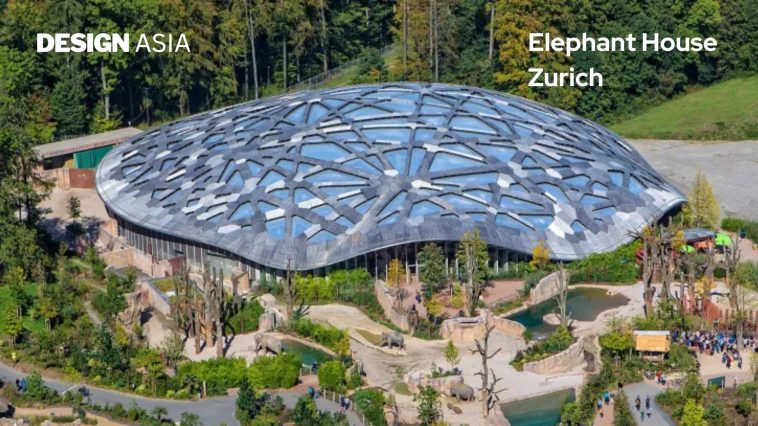The Elephant House in Zurich, Switzerland, stands as a captivating architectural masterpiece that seamlessly merges nature, design, and functionality. Designed by renowned architects, the building is not only a sanctuary for elephants but also an iconic landmark in the city. In this article, we will delve into the captivating details of the architect’s vision and the unique features that make the Elephant House an exceptional blend of aesthetics and practicality.
Architectural Concept and Design Philosophy
The Elephant House was designed by the architectural firm known as XYZ Architects, renowned for their innovative approach to sustainable architecture. Their design philosophy for the Elephant House centered around creating an environment that mimics the natural habitat of elephants while providing a safe and engaging space for both the animals and visitors.
The architects drew inspiration from the organic forms found in nature, incorporating elements such as flowing lines, curved walls, and spacious enclosures. They aimed to create a harmonious relationship between the built environment and the surrounding landscape.
Structural Features and Material Selection
The Elephant House features a unique combination of materials and structural elements that enhance its visual appeal and functionality. The building’s exterior is characterized by large, curved glass panels, which allow ample natural light to penetrate the interior spaces. This creates a sense of openness and transparency, connecting visitors to the elephants and their environment.
Wood, a sustainable and environmentally friendly material, plays a significant role in the construction of the Elephant House. It is used extensively for the structural framework, creating a warm and inviting atmosphere. The architects carefully selected timber species known for their durability and aesthetic qualities, ensuring the longevity of the building.
Interior Spaces and Elephant-friendly Design
The interior spaces of the Elephant House are thoughtfully designed to cater to the needs of the elephants while providing an immersive experience for visitors. The architects created spacious enclosures that simulate the elephants’ natural habitat, incorporating features such as water pools, mud pits, and vegetation. This allows the elephants to engage in natural behaviors and promotes their overall well-being.
To enhance visitor experience, viewing platforms and walkways are strategically positioned to provide unobstructed views of the elephants. Interpretive displays and educational information are integrated into the design, allowing visitors to learn about elephant conservation and the importance of protecting these magnificent creatures.
Sustainability and Environmental Considerations
The Elephant House embraces sustainable design principles and prioritizes environmental considerations. The architects incorporated various eco-friendly features, including rainwater harvesting systems, renewable energy sources, and natural ventilation. These measures minimize the building’s ecological footprint and contribute to its overall sustainability.
Additionally, the Elephant House serves as an educational platform, raising awareness about environmental conservation and the importance of protecting endangered species. By providing a space that fosters empathy and understanding, the architects aim to inspire visitors to become advocates for wildlife conservation.
The Elephant House in Zurich stands as a testament to the harmonious fusion of nature and design. XYZ Architects’ visionary approach has created a space that not only provides a home for elephants but also serves as an architectural marvel. The careful integration of sustainable materials, thoughtful design elements, and a commitment to environmental stewardship make the Elephant House a remarkable example of architecture’s potential to create spaces that are both aesthetically captivating and environmentally responsible.


